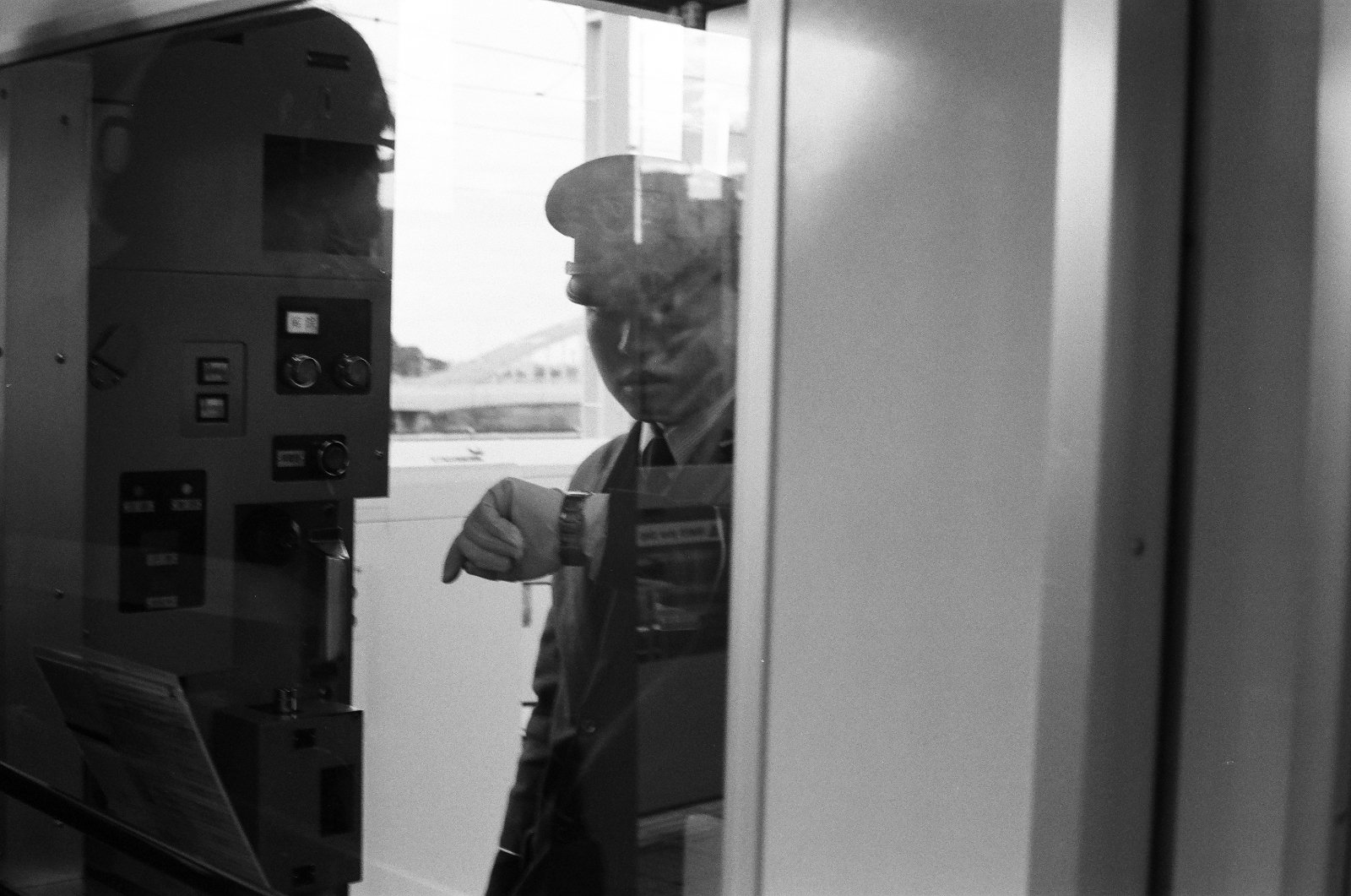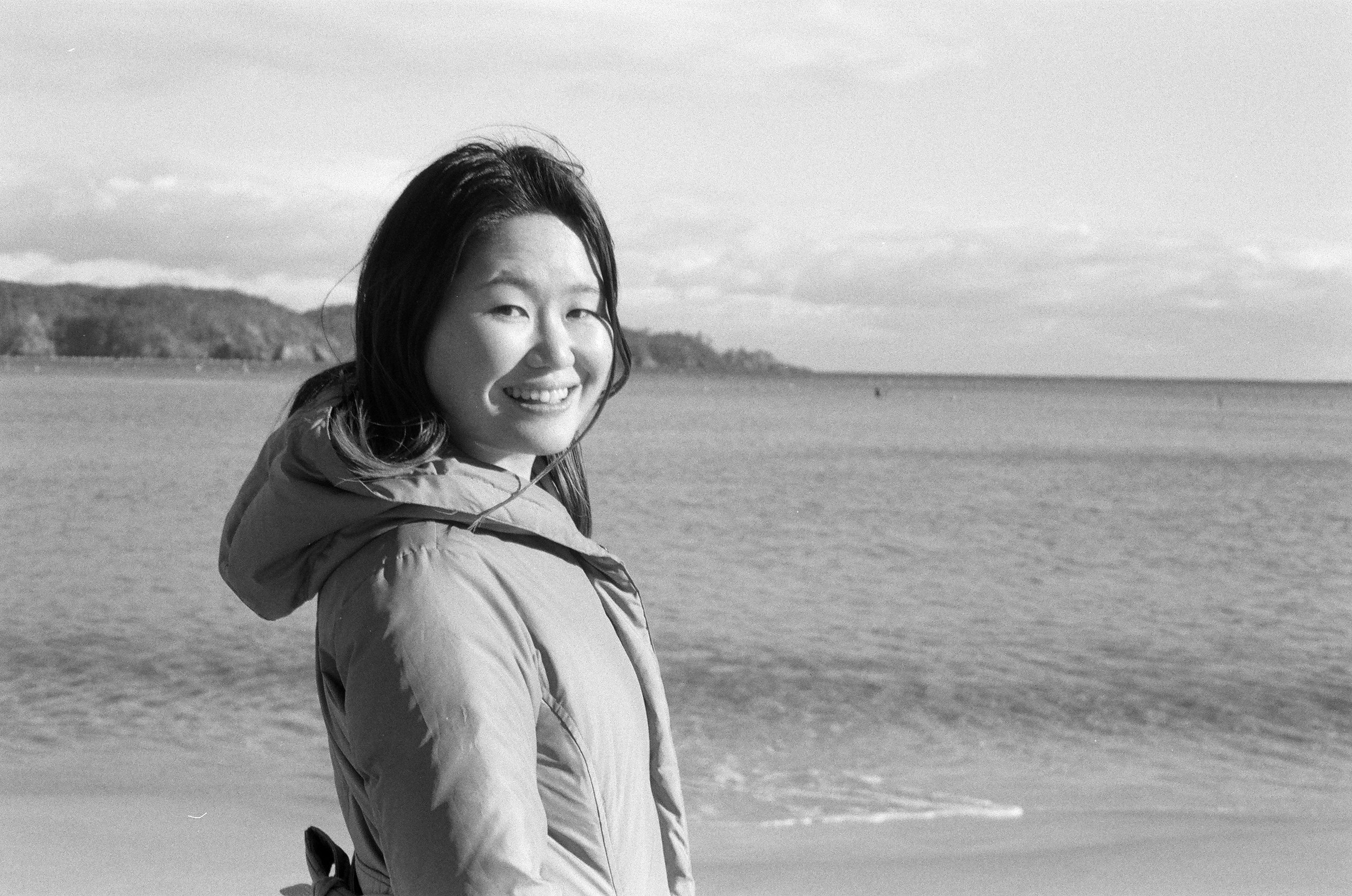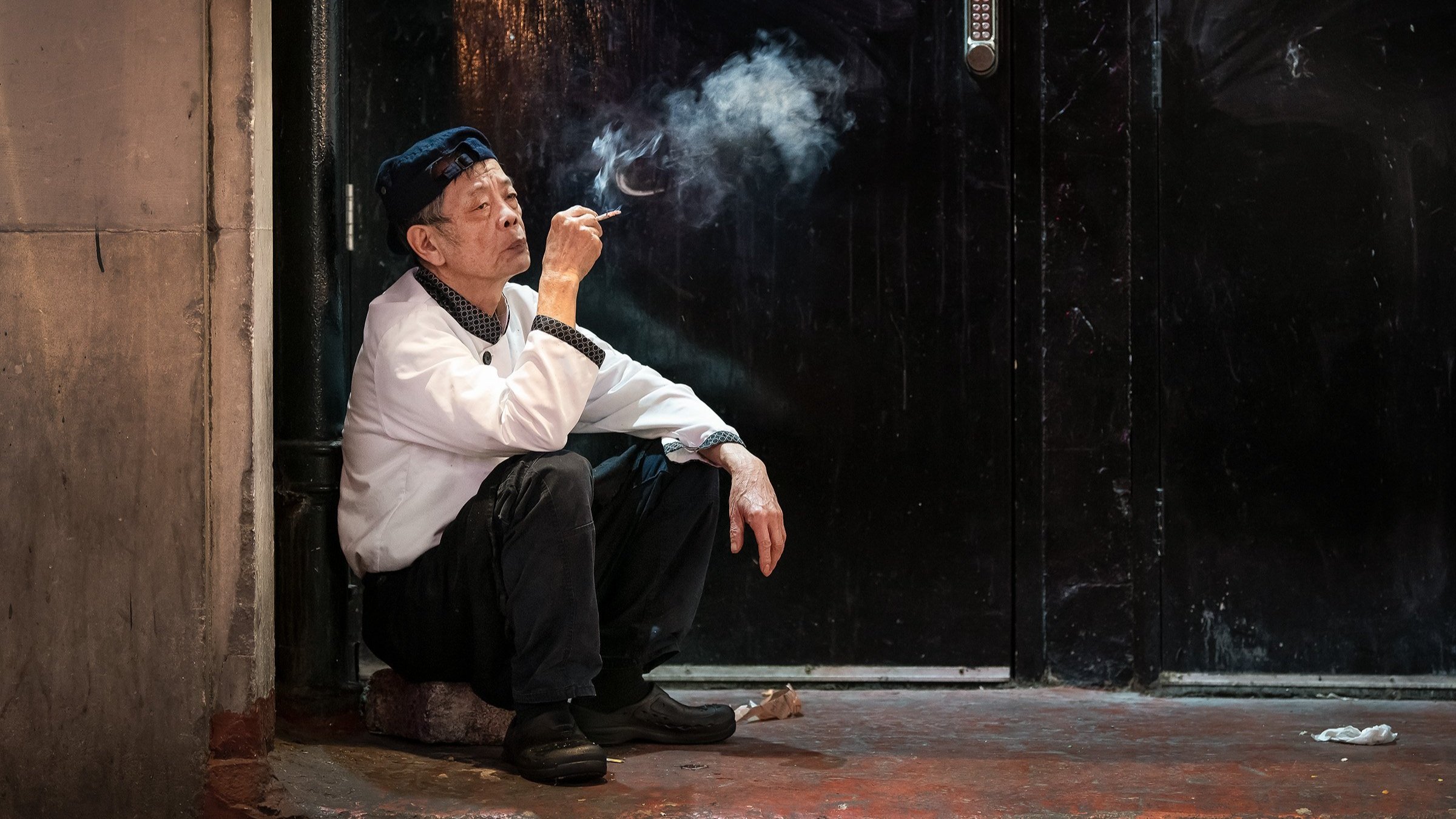Vintage (ビンテージもの) by Glen Snyder
Welcome to another captivating photo essay, this time by Glen Snyder. We'd love to hear your thoughts. Feel free to comment below and, if you're interested, share your photo essay with us. Your perspectives add valuable dimensions to our collective exploration.
The allure of vintage photography lies in its ability to capture a moment in time with a distinctive charm and character. In this photoessay, Glen Snyder explores the world of vintage through the eyes of a seasoned photographer who has rediscovered the beauty of film photography using a classic Konica III camera from the late 1950s. With a focus on black and white films, including Ilford Delta 400 and Kodak T-Max, and vibrant color films like Kodak Ektar 100, this essay delves into the unique qualities that make vintage photography so captivating.
From exploring expired films to experimenting with retro-look films, our Glen takes us on a journey through the varied and fascinating world of vintage lenses, leaf shutters, and the nostalgic tones of bygone eras. We discuss how these elements have influenced his creative process and shaped his understanding of photography in the digital age.
Vintage (ビンテージもの)
Vintage, by definition, generally refers to things of high quality produced with great skill in the past. In photography the term is used in a variety of ways. There is the vintage camera which was produced sometime in the past century and which uses film. Then there are vintage lenses, also from the same period and which have manual focusing and aperture settings. In general, there are more people using vintage lenses than vintage cameras, since many vintage lenses can easily be adapted to modern mirrorless digital cameras. There is also vintage film which is often just a euphemism for expired film. Being expired generally means that the contrast and light sensitivity are lower, meaning that they need longer exposures than the original box speed indication. In addition, there are new “vintage-tone” films, which are designed to provide some sort of nostalgic look yet are within the expiration date.
In order to explore the vintage look, I purchased a fully mechanical Konica III…a small but impressively heavy rangefinder camera produced in 1958, the same year in which I was born. To put the production year in context, late 1950s and early 1960s were a highly turbulent and competitive time, in both Japan and elsewhere. The Cold War was in full swing and the U.S. and the Soviet Union were also engaging in the Space Race. Japan was just emerging from post-war reconstruction, and camera companies in the country were finally demonstrating that they could compete with Leica and other European camera manufacturers in producing quality optics with many mechanical innovations. These innivations were built on a long tradition of Japanese camera manufacturing that perhaps had not before been entirely appreciated in the West.
“Taking photos with intention, I think, has also helped me improve my digital photography, especially in challenging lighting situations.”
In the 1950s, 35mm rangefinder cameras were becoming more popular than medium format cameras, and single lens reflex cameras had not yet taken over the market. Konica cameras from this decade were each machined from a solid block of brass, then chrome plated. The Konicas generally came with fixed 48mm f/2 Konishiroku Hexanon lens (there was also a 50mm lens available in the Konica IIIa). The lenses all have a leaf shutter in front of the aperture blades and offer shutter speeds up to 1/500s (including a PC sync socket that still works with modern flashes at sync speeds all the way up to the maximum 1/500s). Since the camera was made for the export market, the focal lengths were all marked in feet rather than meters. This is not that important, however, as the rangefinder system allowed for accurate focusing. The Konica III has one unusual feature which previous Konica models did not: a two-stroke film advance and shutter-cocking lever located on the front of the camera, rather than on top of the camera as is usually found today. Being a leaf-shutter range-finder camera, it is so quiet that I sometimes wonder if it is actually taking a photo, which makes it ideal for close-up street photography. Since it is fully mechanical, I attach a modern and compact TTArtisans Light Meter to the cold-shoe. I chose the silver model which blends in with the camera’s chrome plating.
To test the “vintage potential” of this camera, I have tried a variety of black and while films. First, I loaded up a Ilford Delta 400 touted for it’s fine “tabular grain technology” and took some photos around the train stations near my home.
To me, despite the use of more modern film, the film produced an old-fashioned cinematographic look where perhaps the viewer might have trouble discerning if the photo is modern or old. I was particularly pleased to see how the leaf shutter mechanism handles motion blur.
Whether panning with moving people or keeping the camera still while a train rushes by, the photos do not seem to have some of the artifacts or uneven distortions caused by the rolling shutter effect or shutter drag which can be observed with some film and also digital cameras. The blur simply seems smoother to me with a leaf shutter photo.
The second film I tried is also a relatively new fine-grained professional film, Kodak T-Max which uses Kodak’s proprietary T-grain technology…but in this case there is a twist. While traveling in northern Japan, I stopped by an old photography store and found that they had a box of T-Max100 on the shelf that had been sitting there for 20 years (Expiration date 1/2005). The owner of the store tried to talk me out of purchasing it and the box was actually faded from sitting on the shelf all of these years, but it still had the original price sticker of 450JPY, so I couldn’t resist. Given the age of the unexposed film, I shot it in fairly bright light and at ISO 50. To my surprise, all of the photos on the roll actually came out.
Although the photos do seem grainy and the first photo is both blurry and unsharp, the style reminds me of Japanese photography from the 1920s, especially by Nakaji Yasui (whose works would half a century later inspire a young photographer by the name of Daido Moriyama). The second photo, taken on the banks of Tama River, also has a lot of grain and some unevenness in the sky due to degradation of the film emulsion.
I then tried AgfaPhoto APX400 film, taking photos of two friends in Iwate Prefecture.
The first photo is outdoors with natural light, while for the second one I used a PC sync cable connected to an external flash. The grain seems much finer with the flash, and I would venture to say has a certain cine noir look to it.
Finally, to include a modern “retro-look” film, I gave Kosmo Foto Agent Shadow 400 a try. To say that this film is grainy would be an understatement The grains appear absolutely sooty, preventing any sort of fine resolution in the images.
Compared with 20-year-old T-Max100, Agent Shadow is even grainier. This is not to say that Agent Shadow is a bad film, just that it should be anticipated that it is very grainy if that is a look you are pursuing. There are many other films worth trying and describing, but at this point Delta 400 is my favorite because I feel that the character of the camera is not overshadowed by the unusual character of the film.
Regarding color photography, I started with Kodak Ektar 100 to see if there was any special rendering associated with the camera. The film is touted as producing good skin tones, so I took some more photos with friends in Iwate at a cafe. The morning sunlight was quite bright, rendering a bright orange tones but also nice greens and blues.
From there, I tried two “Vintage Tone” films on the market today. Before I describe the results, I would like to note that the Kodachrome that came out in 1935 had colors that were just as bright as those of today. So there is really nothing truly “vintage” by vintage tone film of today. Modern vintage tone films tend to have unusual color histograms with a sharp dropoff in red luminosity in both the shadows and highlights. On the other hand blue and green have higher intensities in the shadows. This gives the “look” that appears like an old photograph where the red pigments have faded over time, even though red is pleasantly rendered in the middle-intensity light. This effect, to my eye, does produce a nostalgic feel. I does have a feel somewhat like the muted tones of old black and white photos which were hand-tinted in the late 1800s and early 1900s as was commonly done in nearby Yokohama. I enlisted the help of model Maya Akimoto to try IlfoColor 400 Vintage-tone. The skin tones appear somewhat washed out, but for me it is an attractive effect.
Finally, I tried Escura Showa400 film which is also marketed as a retro film described as having “gentle saturation” and took some shots around where I live. I really like the rendering of reds, which come out orange, though the graininess is a bit distracting, especially in low light.
I’ve had a lot of fun with the Konica III, exploring the concept of vintage in modern photography. The films I tried were able to create photos with a variety of different renderings which I think are distinct from what digital photography can offer. While my selection of films is not exhaustive, I hope that it demonstrates how film selection can influence the outcome. I will probably continue to experiment with other films although, among the ones presented here, I find Ilford Delta400 reliably nice and will also continue to enjoy using IlfoColor 400 for the weird colors that it renders. Expired film is a bit hit-and-miss, I think but my one experience with the old T-Max100 was positive enough that I might give it a try again.
How did your experience with the Konica III camera, a relic from the 1950s, shape your understanding of vintage photography and its significance in today's digital age?
Using the Konica III was my first experience with a rangefinder camera and with a leafshutter lens. There are are a number modern digital cameras that feature rangefinders and/or leafshutter lenses, the Konica provided me with an economical way to see how these work.
Among the different films you experimented with, which one do you feel most authentically captured the essence of vintage photography? Did any film surprise you with its results compared to your expectations?
Perhaps it is the photographer and the camera more than the film. I didin't mention it, but I like watching old noir movies to get ideas about vintage photography. In some, the film quality is as good as modern cinematography. I think it is no accident that cinematographers today are also using vintage lenses that have been rehoused to work on modern cameras. So, maybe this whole thing about vintage-look film having odd color shifts and being all grainy is just made up. Regarding the films that I have tried, my initial reaction to some of the grainier films, for example the IlfoColor and the Agent Shadow film was that the results were just all junk. The IlfoColor has grown on me but I realize it is not an aesthetic that everyone likes. I have not tried Cinestill or other movie film stocks that have been repackaged and had the remjet layer removed to be used with still photography. That will be something to look at in the future.
In your exploration of vintage photography, you mentioned experiencing both technical and aesthetic aspects unique to film photography. Can you elaborate on how these elements influenced your creative process and the final outcomes of your photographic endeavors with the Konica III?
One major pitfall with starting in film photography is that the shutter speed is quite limited (often 1/1000s or 1/500s is the fastest) and the film ISO is not as high as you might want it to be. If you put slow film in your camera (ISO 100 or so), you'll be able to take great photos outside, opening up the aperture and getting some good bokeh. If you have just half a roll finished and go inside, however, you'll have problems taking photos with the same film, unless you use flash. On the other hand, if you load fast film (ISO 800 or so) to take indoor photos, you find out quickly that you're going to have problems outside. The easiest way to get around this is to take photos with intention, planning what you are going to shoot even before you load film into the camera. Taking photos with intention, I think, has also helped me improve my digital photography, especially in challenging lighting situations. For those who work primarily in digital and then emulate different film looks in post, I think it is valuable to actually see how acutal film stocks behave in different lighting situations. If you give it a try, you're likely to be surprised with the difference.



















